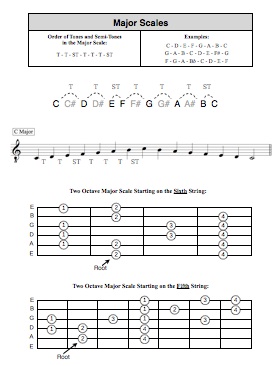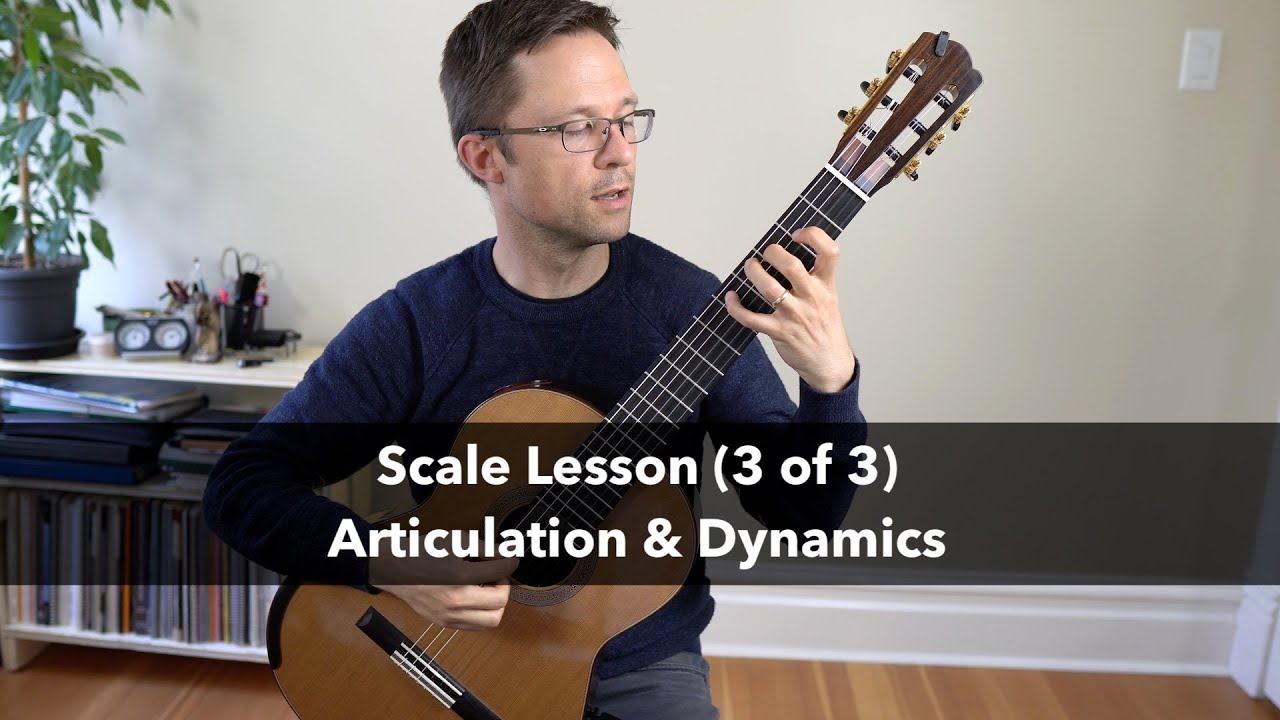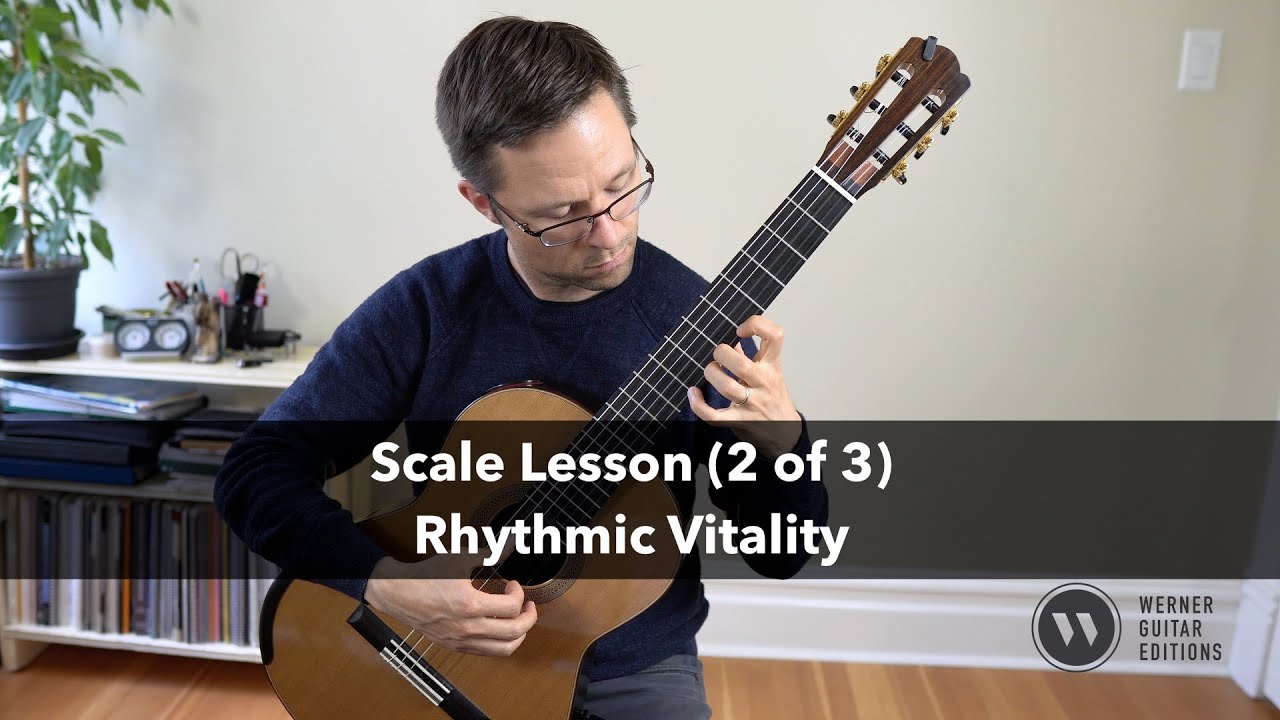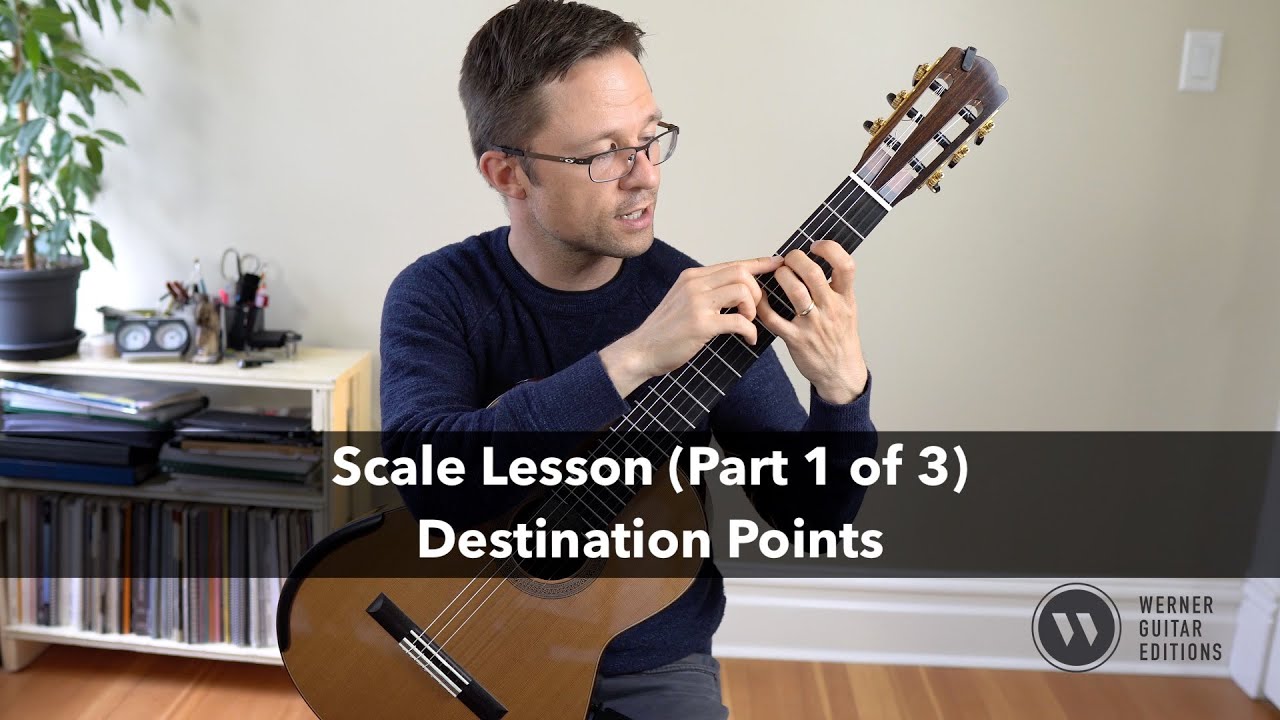Two free major scale patterns for classical guitar. These are great for students learning their first moveable patterns. Some beginner students just need to get playing their major scales and reading the notation just isn’t getting through. While sprucing up your reading skills follow easy visual diagrams of scales so they can get started. Some students are also just more visually oriented. Also check out my eBook Major Scales for Classical Guitar which includes Notation + TAB, and video lessons for each scale. Another great supplement for using scales to learning to read music well is: Scale Pattern Studies for Guitar by Shearer (via Amazon).
Download the free PDF here:
FYI:
T = Tone (also called whole step)
ST = Semi-tone (also called half-step)





A very nice tool for a beginner like me. Are there recommended fingerings for the left and right hands that should be used when playing these scales?
I refer to this as a form I, form II, closed major scale. Your form II is very different however. I use a one fret shift at the second string, and two stretches on the first string. This sets the student up for three octave scales later and the shift is a bit less daunting. Your version has completely different merits however. I am going to play with it and show it to my students. Perhaps they will give me some feedback and this will lead to some fruitful discussion.
Care to share your diagram? I am interested. 🙂